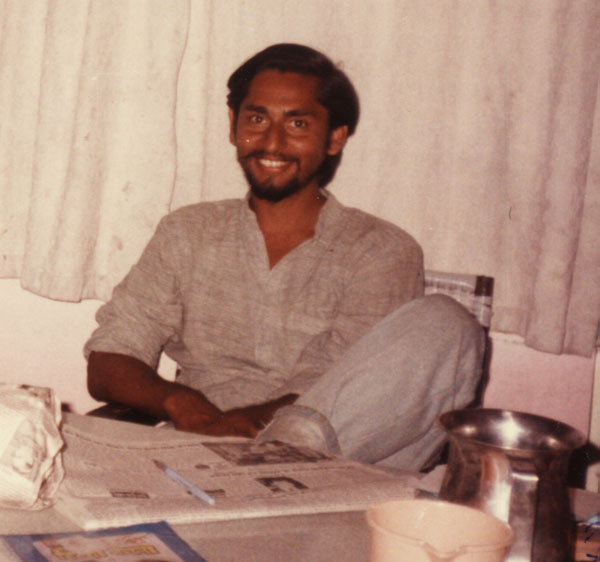Founding member, Khedut Mazdoor Chetna Sangathan (KMCS) and Adharshila Learning Centre, Madhya Pradesh.
3–4 minutes
“We all were interested in music…Secondly, singing and dancing was a very natural among the tribal people…No matter how you sing, good or bad. Everyone is singing and you are also singing in the group…Dancing is also the same; when you listen to the beating of their drums no one can stand still…The whole body starts vibrating. That is the kind of a drum…It seemed very much natural for them, like breaking out with a song while walking…This is wonderful about tribal songs that one can compose a song on the go, on any given topic…The very first song was about the NAAKEDAAR: ‘NAAKEDAAR THEKEDAAR’…They (Adivasi community) have a GAAYNA, a spiritual song which goes on for 3-4 days, describing the stories of Gods, Goddesses and the Earth. We used that tune and composed our song The whole story was- the NAAKEDAAR came, how he behaves, and… what did we do as an organization collectively and finally how did we shove him off…So, the songs became (popular) in the villages and we invariably sang songs in the meetings…”-
Amit Bhatnagar
————————————-
Amit Bhatnagar left his study of Architecture to move to a life of struggle and mobilisation for social justice. He has a keen interest in tribal resistance, art, music, culture, history and economy, and their knowledge and dissemination. A founding member of the phenomenal tribal movement in Alirajpur district of western Madhya Pradesh, the KMCS, Amit is also, along with his wife Jayshree Bhalerao, the founding member of Adharshila Learning Centre, a school for tribal children in Sendhwa, Madhya Pradesh. Many villages which were a part of KMCS were also on the banks of Narmada and in the submergence zone of the Sardar Sarovar Project and KMCS became an integral part of the Narmada Bachao Andolan (NBA). Amit has played a critical role in the formative years of the NBA. Many activists of KMCS continue to play an important role in the NBA.
In this interview, Amit Bhatnagar shares his vast experience in building a people’s organisation in the tribal areas of Alirajpur district of M.P. He explains how the KMCS was formed and also how the nature of the state and the social –political system marginalises the tribals. In particular, Amit talks about the role of music in the empowerment of people, and also describes the various people’s movements in the region and their similarities and differences. He describes in detail the involvement of the KMCS in the formation of the NBA and challenges they faced. He also reflects on the many strategies of the NBA, critically examines the NBA, and brings out its strengths, limitations and achievements.
Since the issues Amit speaks about are all interlinked, it is important to listen to the entire interview. However, for those interested in any specific strategy or issue, here is a list of the relevant sections and their time stamps which will take you directly to that topic.
| 0:00:00 to 0:08:00 | Amit and his early years in the tribal area of Alirajpur |
| 0:08:00 to 0:35:00 | Issues faced by the tribal villages of Alirajpur; challenges in building a people’s organisation; the nature of KMCS and its relation with different movements in the region |
| 0:35:00 to 0:45:00 | Significance of cultural events in building people’s organisation |
| 0:45:00 to1:10:00 | The SSP, early involvement of KMCS in the issue and the formation of the NBA |
| 1:10:00 to 1:40:00 | The involvement of KMCS in the NBA and its challenges |
| 1:40:00 to 2:09:00 | Reflections on the strategies of the NBA |
I am thankful to Parthiv Shah for one of the photos in this interview. The other photos are acknowledged in the Acknowledgements

Interview Duration: 2:10:00
Language: Hindi, Subtitles in English
Subtitles can be switched on and off by clicking ‘CC’ button at the bottom right of the video